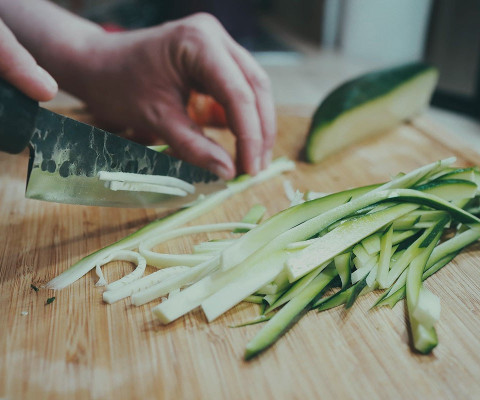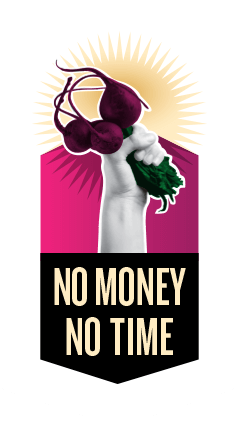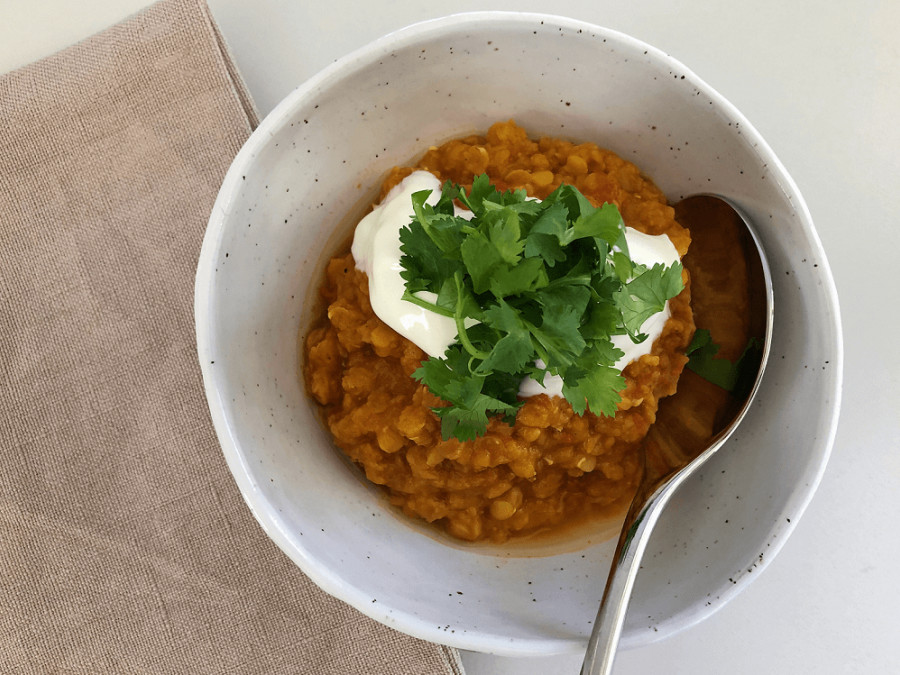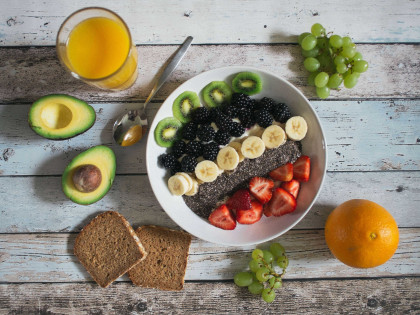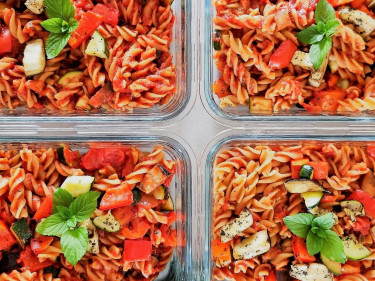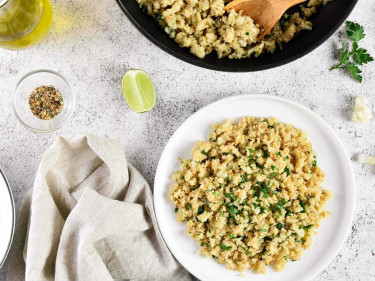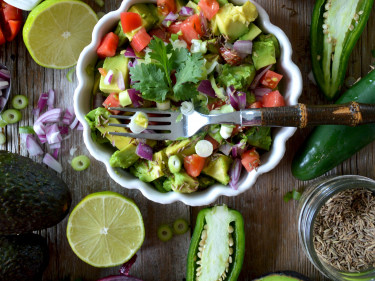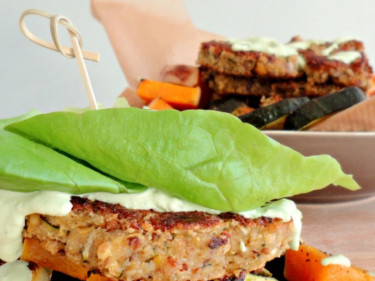Serves = 4
- 400g can diced tomatoes
- 1 cup red lentils, if you don’t have a measuring cup fill the empty tomato can up halfway with the lentils
- 800ml water
- 2 tablespoons curry powder
- 1 dollop peanut butter
- 2 teaspoons sugar
- 1 tablespoon plain unsweetened yoghurt to serve
